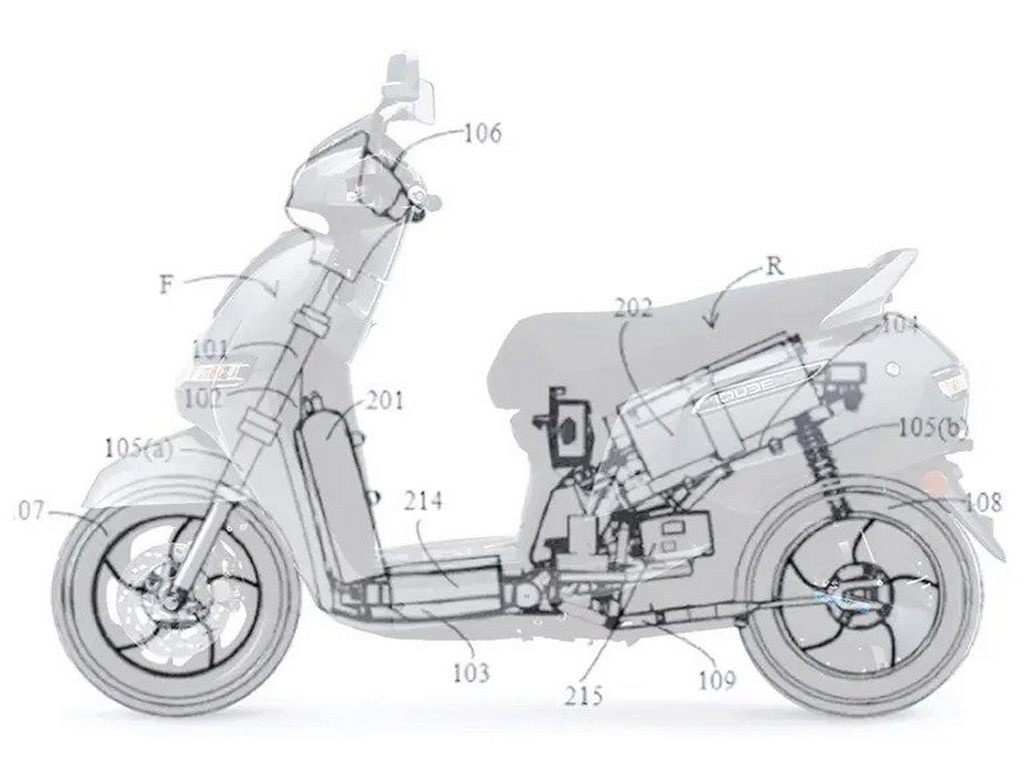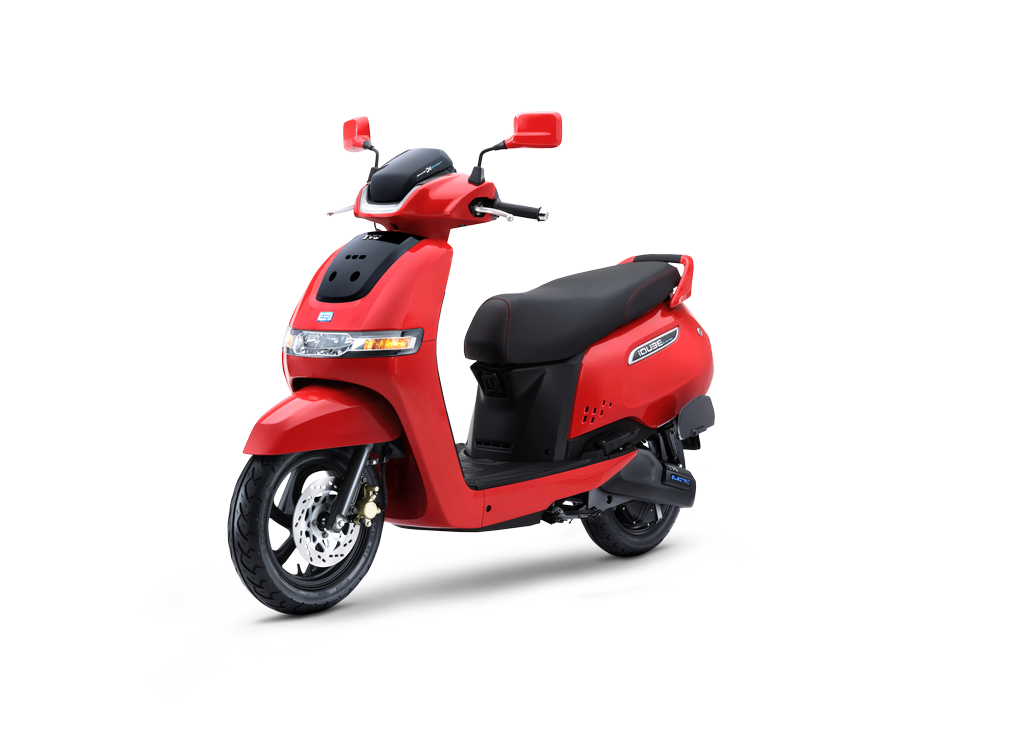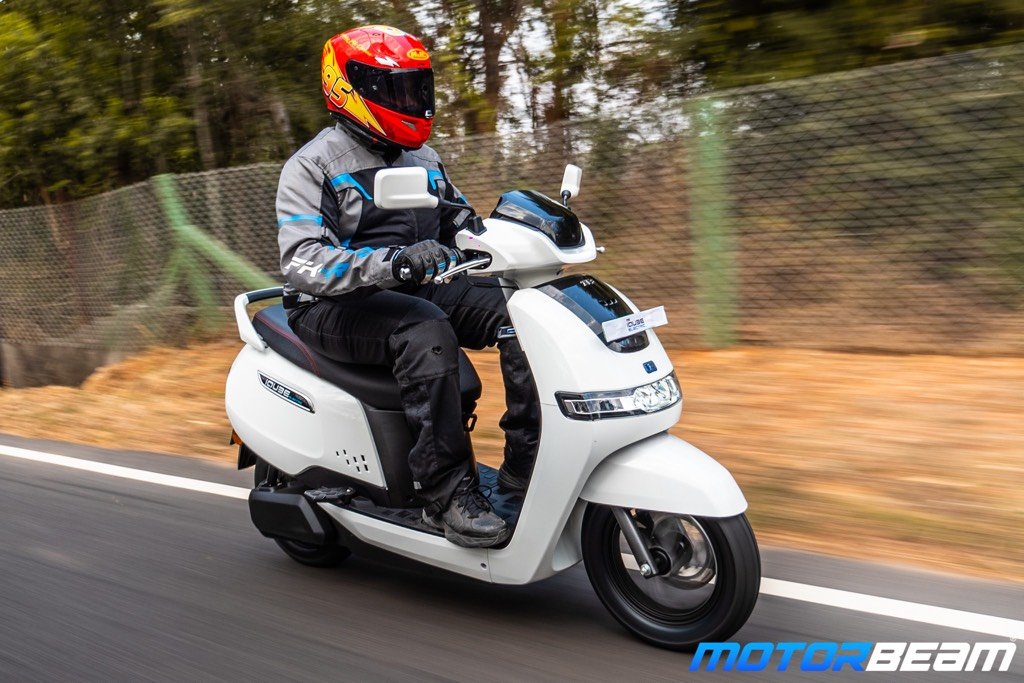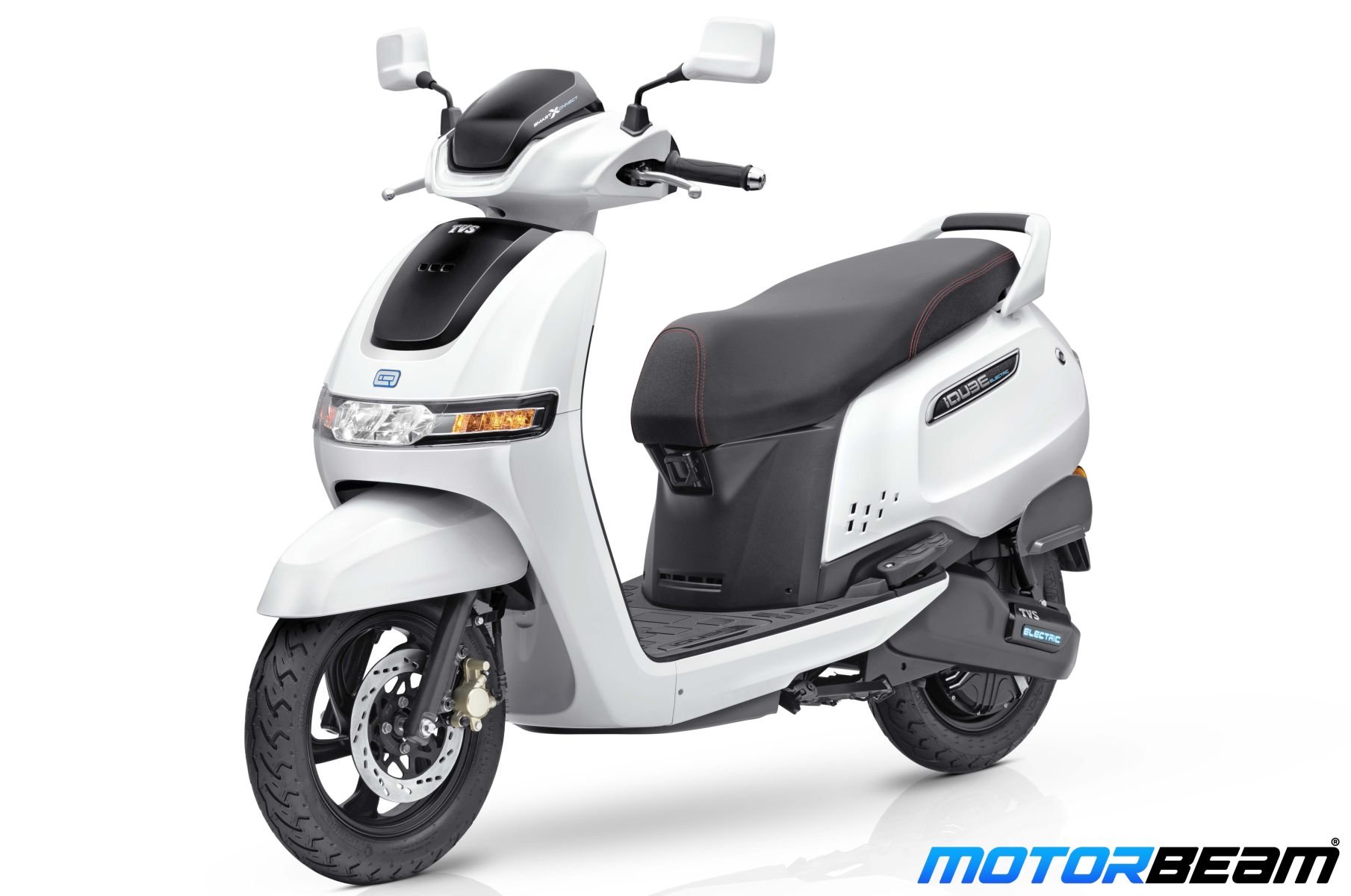
The hydrogen powered TVS iQube gets a simple layout that’s easy to repair, there’s also a battery pack for emergency needs
Out of nowhere, a new patent of TVS has been leaked online and it’s none other than the company’s upcoming hydrogen fuel cell powered iQube scooter. Yes, you heard that right! The Hosur-based bike maker is silently developing such an advanced technology product.
The leaked patent, which is basically the image with all the components in place, shows that the company has nearly finished developing the prototype. The chassis downtube at the front has the cannisters that store hydrogen gas.
The cannisters are connected to the hydrogen fuel cells stacked under the seat via dedicated pipes that are routed under the floorboard. Interestingly, there’s also a regular battery pack, probably a lithium ion unit, under the floorboard for emergency needs.
The battery pack might be charged by regenerative braking and/or by the fuel cells themselves when they produce additional electricity. The components such as the pressure regulator, flow meter, and shut-off valve are installed near the swing arm.
The scooter, probably, features a hub motor as the patient image doesn’t show a motor. Above all, the parts are arranged in a simple manner with maximum focus on serviceability. The overall exterior looks very similar to that of the current iQube.
When TVS launches the scooter with this great technology, there’s no need of charging as the moment hydrogen is filled in the cannisters, the fuel cells will start producing the required electricity for running the scooter.

When it comes to the working methodology of hydrogen fuel cells, they are very similar to usual batteries sporting cathode, anode, and electrolyte between them. Hydrogen is supplied to the anode and atmospheric oxygen is supplied to the cathode.
When hydrogen gets in touch with the anode, a catalyst splits its protons and electrons. The electrolyte allows only the protons to swim through it to reach the cathode.
So, the electrons are forced to go through the external wire to reach the cathode which then are trapped as electricity and transferred to the controller and the motor.
When both the protons and electrons, at last, reach the cathode, hydrogen and oxygen react to form water vapour which is sent out as exhaust gas. When TVS successfully pulls this off, it will be the end of the emerging battery electric vehicle technologies.



